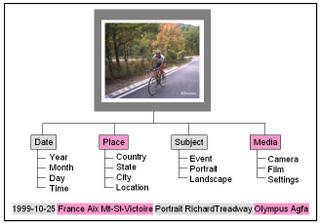I discovered Del.icio.us last year and have been using the service ever since. It really changes the way you view the web. As BusinessWeek points out tagging is one of the essential tools that make it possible to listen to the web as a conversation. Being able to see what people are reading and how they categorize it provides a wealth of information for brand managers.
Email and a browser are being replaced by the new tools of the trade: Del.icio.us, PubSub and Bloglines.
The blogosphere conversation is based on a Publish and Subscribe model. The loose coupling of that model means that publishers and subscribers don't need to know anything about each other. If you find a blog you like you subscribe. The publisher doesn't need to know or take action to let you subscribe. The the power of the publish subscribe model is why RSS has become so popular. Before RSS the only way to get alerted when your favorite site was updated was to either check regularly (polling) or to sign-up for an email notification (asynchronous alert). As email has become spam infested, email alerts look like just more spam. Furthermore email is designed as a communication model where publishers and subscribers do need to know each other. With email the publisher owns the subscriber list making getting on and off the list problematic.
In the publish subscribe model tags can be created by both publishers and subscribers. Of the two alternatives the more useful to brand managers is subscriber based tags. The reason is that publisher based tags are completely susceptible to spammers. The best know tagging service, library of congress doesn't rely on the author to categorize its book. The library does it after careful analysis. As such Del.icio.us tags (subscriber based) are infinitely more useful than Technorati tags (publisher based) for understanding what's being tracked in the blogosphere .
An interesting tag space where both publishers and subscribers meet is Flickr. I switched to Flick recently because I wanted to integrate my photos into my blogging. I had been using Webshots. Webshots uses a the photographic paradigm of "albums" to organize your pictures. With the album approach a given picture is in an album. With that approach you're left with the question, "should albums be organized by media, events, places or subjects"? The reason that Flickr tags are so useful is that the answer can be all four. For example this photo was tagged "SantaTeresaPark SanJose California Landscape Poppy NikonN90-Agfa 2003-03-15"
What you want from a photo organizing system is something that lets you find pictures at a later date no matter how you happen to remember them. Flickr tags do just that.
Here is the tagging system I use.

The interesting thing with Flickr is that subscribers can also tag your photos. This gives you the unique perspective of seeing how others categorize your pictures.
Richard Treadway